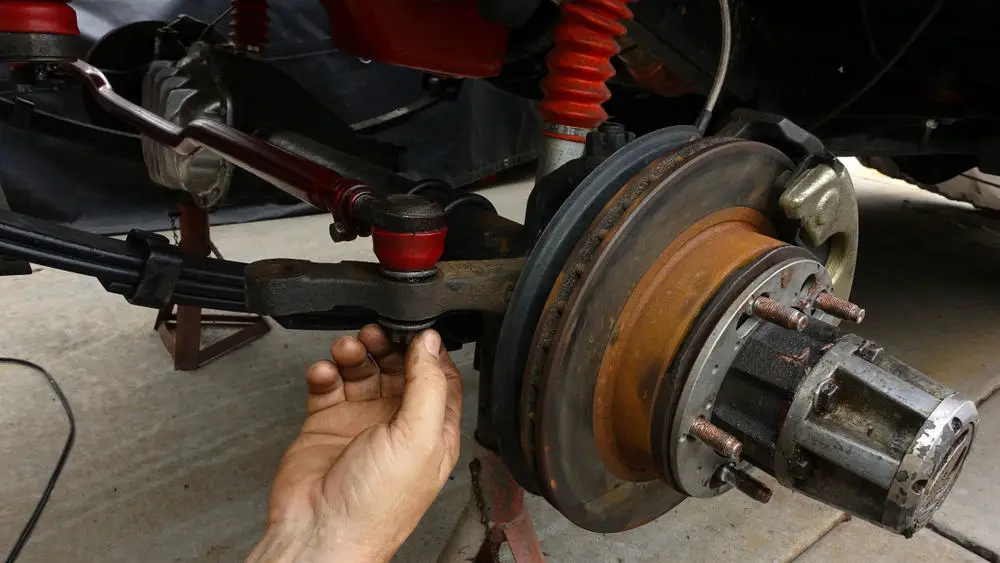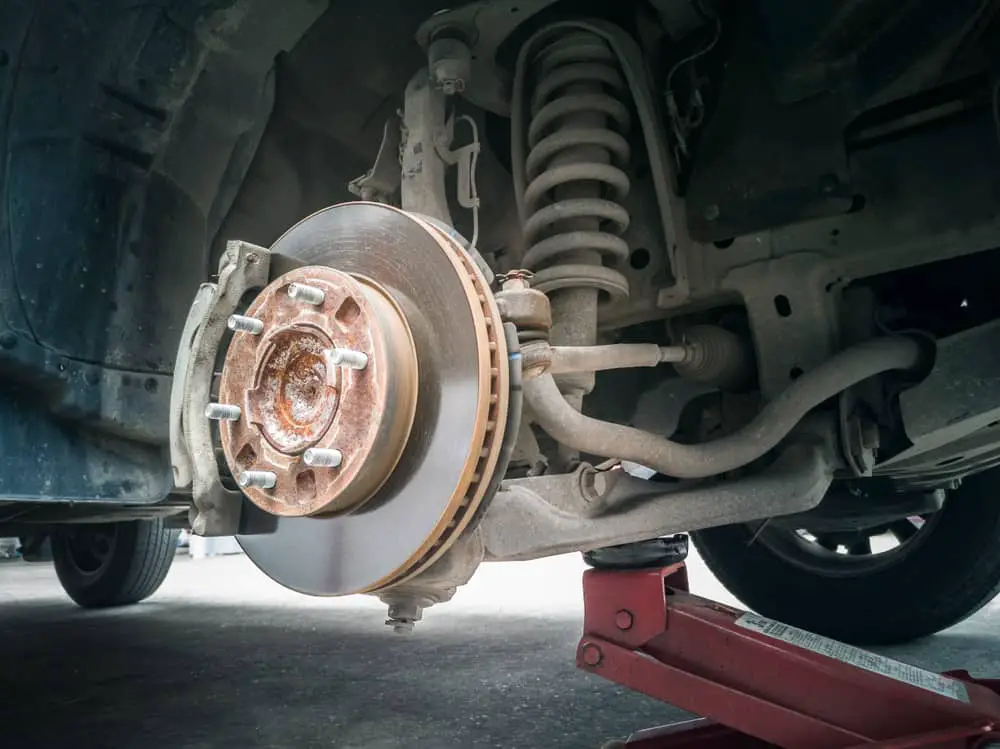
The shocks on a truck play an integral role in the suspension setup. As trucks are designed to carry loads, the un-laden truck will be more bouncy in the rear. The shocks combine with the torsion bars (sway bars) to ensure that the up and down travel and side to side roll of the cab and load box are kept to a minimum.
New shocks will counteract the rocking of the cab and load-box on the truck chassis, resulting in a much smoother ride and improved road holding and safety. Worn shock absorbers pose a safety risk as they may contribute to the loss of control of the vehicle.
Trucks may have different suspensions designs, but the role of the shocks, tires, and torsion bars and springs all work together to cushion the effect of an uneven road surface on the vehicle. Let’s look at what role the shocks play in making your truck ride smoother.
What Are The Signs Of Worn Shocks On Your Truck?
The shocks and tires are the components of the suspension that work the hardest in dampening the effect of uneven roads. If the tires are overinflated, they cannot perform their task of dampening shock loads from the road surface. The result will be a harsh ride and poor road holding.
The shocks are designed to absorb most of the up and down travel of the wheels due to uneven road surfaces and dampen the effect on the passenger cabin and load box of the truck. Most trucks have a ladder frame chassis to which the engine, gearbox, and drive train components are fitted.
The cabin and load box are mounted on the chassis on rubber pads. The suspension components help minimize the movement between the chassis and the cab and box, ensuring a stable setup that can cope with a load of additional passengers cabin and goods in the load box.
When the shocks on a truck are worn, they no longer provide sufficient vertical dampening to the wheels and will result in the following symptoms:
- The truck will bounce up and down when traveling over humps or hollows in the road;
- The front of the truck will dive down when the brakes are applied or will rear up during acceleration;
- The truck will roll excessively during cornering, even at low speeds;
- You will hear unusual noises from the truck when worn shocks bottom out, or the worn-out shock mounting will make grinding noises.
There are three basis shock designs used on trucks. Telescopic shocks consist of a hollow gas or liquid-filled chamber in which a piston mounted on a steel strut is fitted. The pressure of the gas of liquid (oil) in the shock tube will resist the force of the piston moving up or down the tube. The seals on telescopic shocks wear out over time, and the gas of liquids will leak out, resulting in loss of dampening.
Coil springs are made of high tensile steel that has been coiled into a spring and heat-treated to make the steel coils harder. Over time the coils springs will lose their ability to flex up and down as metal fatigue causes the bonds in the steel to break down, resulting in a loss of dampening.
Leaf springs are made of layers of curved steel blades tied together in a stack and with mounting points on each end of the bow-shaped component. The steel blades are heat-treated to eliminate all existing micro-cracks in the steel and ensure an extended lifespan in providing dampening.
Torsion bars, also called sway bars, are designed to minimize body roll on trucks and cars. Torsion bars, leaf springs, and coil springs are designed to last much longer than the telescopic shocks and will not be required to be replaced as often. The most noticeable improvement in the ride quality of a truck will be achieved by fitting new telescopic shocks.
With tires inflated to the correct pressure and a set of new telescopic shocks, the ride in your truck will be much smoother. Leaf springs are most often fitted to the rear axle on trucks as they have two mounting points to the chassis, and extra blades can be added to stiffen them up to carry extra loads.

How To Check Whether My Truck Needs New Shocks?
If you can stand on the front bumper of your truck and bounce the truck up and down, the shocks should stop the bouncing movement quickly. If the front end continues to oscillate up and down, it is a sign of worn shocks. Stand in the load box and do the same to check the rear shocks.
The acronym CURSED is used to help diagnose the symptoms of worn-out shocks.
- C – Car veers from side to side in strong wind gusts
- U – Uneven wear pattern on tires
- R – Car rocks forwards when braking and backward during acceleration
- S – Swerving when braking or during lane changes
- E – Excessive steering wheel feedback and vibrations
- D – Delayed stopping and longer stopping distances
Tire fitment centers have staff qualified to diagnose worn shocks and other suspension components. Worn suspensions will put extra strain on the tires and result in premature wear and uneven wear patterns. The replacement of shocks is not time-consuming and could be done during a tire replacement visit.
Telescopic shocks typically last about 50,000 miles before needing replacement, but coil springs, leaf springs, and torsion bars should last much longer as they do not contain moving parts and are less prone to wear out.
Conclusion
Worn shocks are a condition that most commonly occurs after about 50,000 miles and will be required to be checked and replaced when tire changes are made. Trucks with worn-out shocks will be uncomfortable to drive as they will buck and sway like a pony on bad roads.
The increased safety risk and the uncomfortable ride quality caused by worn shocks make the replacement imperative. Worn shocks will lead to premature wear and potential failure of other components such as tires, engine mountings, and body mountings.


